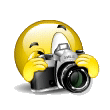Has Anyone Done Any Photography
-
Recently Browsing 0 members
- No registered users viewing this page.
Announcements
-
Topics
-
-
Popular Contributors
-
-
Latest posts...
-
0
Myanmar Airstrike on Mogok Kills 21 Civilians, Including Pregnan
Mizzima At least 21 civilians, including a pregnant woman, were killed in a military airstrike on Mogok, Myanmar’s famed gem-mining town, late Thursday evening. The attack, which targeted a residential area near a Buddhist monastery, marks one of the deadliest assaults in the country’s ongoing civil conflict. The strike occurred at 8:30 p.m. in Shwegu ward, Mogok township, roughly 115 kilometres northeast of Mandalay. According to the Ta’ang National Liberation Army (TNLA), which currently controls the area, the bombing damaged 15 homes and monastery buildings. Independent media and local residents suggest the death toll may be closer to 30, as one of the destroyed homes was hosting visitors at the time. Mogok, known for its ruby mines, was seized by the TNLA in July 2024 during a sweeping offensive by ethnic militias. The military has intensified airstrikes in recent months in an attempt to reclaim territory ahead of elections scheduled for later this year—an effort widely criticised as undemocratic due to the suppression of media and detention of opposition leaders. The junta has not commented on the Mogok strike, though it routinely claims to target only “legitimate threats.” Resistance groups, including the TNLA and the pro-democracy People’s Defence Force, remain defenceless against aerial attacks. This latest strike follows a series of deadly bombings in TNLA-controlled areas, including one earlier this month that killed 16 truck drivers near Sagaing. Analysts estimate the military now controls less than half of Myanmar, with opposition forces holding significant ground. As the conflict deepens, civilian casualties continue to mount, underscoring the human cost of Myanmar’s fractured political landscape. -2025-08-18 -
6
Buy Thai gold now, or wait 6 months?
If you chart the price of gold over the long term, it never fails to go up year after year. Buy some now, buy more later. It depends on what your long-term range is. If you expect to go another 20 years, I would buy it. Dollar average as well. Buy it low, buy it high. It will still go up eventually. Especially after the US economy crashes. -
35
Middle East Israeli Forces Push Gaza Evacuations Amid Tragic Attacks
Yes, they learned from the best... -
11
Crime DSI Summons 1,200 in Senate Vote-Buying Probe
No I think Thaksin is safe on this one at least for now. BJT and Anutin will be the ones in trouble. I think it is going to be an interesting year I see an election coming soon and a PP-controlled government. If that is the case, then BJT will bow and kiss whatever they have to so that the hammer doesn't fall in the senate. Let's face it, revenge on the senate for killing them last election will be good. -
28
THAILAND LIVE Thailand Live Monday 18 August 2025
Fire Destroys Chiang Mai Temple Hall, Roof Collapses Pictures courtesy of Amarin. A blaze engulfed the viharn (main hall) of Wat Veluwan (Pa Phai) in Mae Rim district, Chiang Mai, in the early hours of the morning of 18 August, causing the roof and much of the wooden structure to collapse. Full story:https://aseannow.com/topic/1370092-fire-destroys-chiang-mai-temple-hall-roof-collapses/ -
8
UK Starmer Rallies Europe Before Zelensky Visits White House!
You might enjoy living on your knees in obedience to an autocrat, but real men prefer freedom, and are willing to fight for it. I suppose you'd also advise women being raped to just lay back and enjoy the violation, since that is what you expect the people of Ukraine to do as Putin rapes that sovereign nation.
-
-
Popular in The Pub







Recommended Posts
Create an account or sign in to comment
You need to be a member in order to leave a comment
Create an account
Sign up for a new account in our community. It's easy!
Register a new accountSign in
Already have an account? Sign in here.
Sign In Now